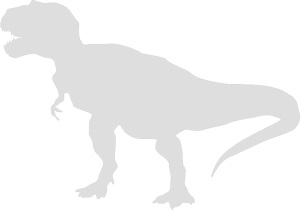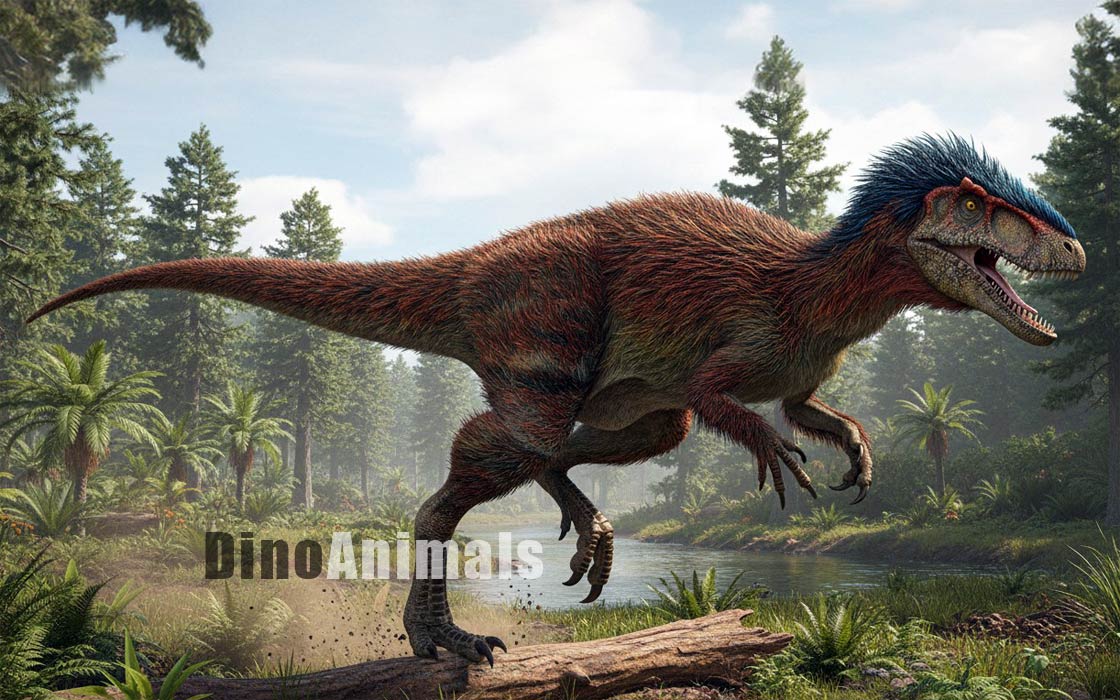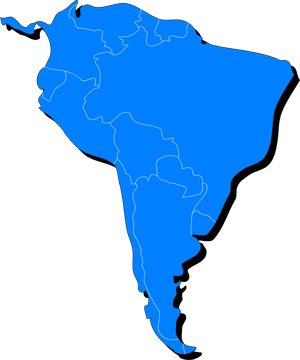Every month, 100,000 readers use the Dinosaur Database, but we receive no support from you. Developing and updating the database requires a lot of work. If you want it to remain open and be updated, please support us via the "Buy us a coffee" button available on every page or via the Support page.
Dinosaur: Joaquinraptor casali

| Length*: | 6.25 m | 20.5 ft |
| Weight*: | 700 kg | 1,543 lb |
*The largest known specimen
Period
Epoch: Late Cretaceous
Stage: Maastrichtian
Years: 72.1–66 Ma
Details
Status: valid
Author: Ibiricu et al.
Year: 2025
Distribution
Area: South America
Country: Argentina
Region: Chubut
Formation: Lago Colhué Huapí
Description
Joaquinraptor casali
Joaquinraptor casali was a large, derived megaraptorid theropod dinosaur that lived in what is now Chubut Province, Argentina, during the Late Cretaceous period, approximately 72–66 million years ago (Maastrichtian stage). It was discovered in the Lago Colhué Huapi Formation, a sedimentary deposit known for its fluvial and lacustrine facies.
The name Joaquinraptor honors Joaquín Casali, a volunteer who aided in the discovery, while casali is for him.
As a member of Megaraptoridae within Megaraptora, Joaquinraptor was an apex predator in southern Patagonia, persisting to the K/Pg boundary.
Etymology
The genus name “Joaquinraptor” combines “Joaquín,” honoring volunteer Joaquín Casali, and Latin “raptor,” meaning “thief.” The species name “casali” also honors him.
Physical Characteristics
Joaquinraptor casali was a large megaraptoran, estimated at least 6-7 m (19-23 ft) in length. The holotype is a partially articulated skeleton, more complete than many megaraptorans.
Key anatomical features include:
- Elongate skull with low-crowned teeth and extensively pneumatized bones.
- Powerfully developed forelimbs with hypertrophied unguals on digits I and II.
- Partial skeleton including vertebrae, skull bones, forelimbs, hindlimbs, pectoral girdle.
- Preservation of a crocodyliform humerus between dentaries, suggesting dietary preferences.
These traits indicate a coelurosaurian theropod adapted for predation.
Diet and Feeding Habits
As a carnivorous theropod, Joaquinraptor casali preyed on various vertebrates. Its diet likely included:
- Crocodyliforms, as evidenced by preserved humerus in jaws.
- Smaller dinosaurs and reptiles in Patagonian ecosystems.
- Scavenging opportunities in fluvial environments.
It used powerful forelimbs and claws for grasping prey.
Habitat and Distribution
Joaquinraptor casali lived in south-central Chubut Province, Argentina, in the Lago Colhué Huapi Formation.
Its environment was characterized by:
- Fluvial sandstones and lacustrine mudstones.
- Humid, subtropical climate near the end-Cretaceous.
- Diverse fauna, with megaraptorids as apex predators in southern Patagonia.
The formation yields latest Cretaceous fossils.
Paleoenvironment
The site was a floodplain ecosystem during the Maastrichtian, with rivers and lakes supporting rich biodiversity. The assemblage reflects a southern Patagonian niche dominated by megaraptorans.
Behavior and Social Structure
No direct evidence, but megaraptorans likely were solitary hunters. Possible behaviors include:
- Ambush predation using strong forelimbs.
- Territoriality in resource-rich floodplains.
- Potential scavenging, given opportunistic feeding.
As an apex predator, it dominated its niche.
Discovery and Research
The holotype was discovered in the Lago Colhué Huapi Formation. Described in 2025, it includes crocodyliform remains, informing paleoecology.
Phylogenetic analysis places it in Megaraptoridae, sister to Megaraptor + others.
Discovery Context
Found in uppermost Cretaceous strata, the skeleton was partially articulated, dating to near the K/Pg boundary.
Significance and Interesting Facts
- Youngest definitive megaraptoran, persisting to K/Pg.
- Most complete latest Cretaceous megaraptoran skeleton.
- Evidence of crocodyliform predation.
- Apex predator in southern Patagonia, contrasting northern abelisaurids.
- Highlights megaraptoran evolution as coelurosaurs.
Conclusion
Joaquinraptor casali was a large megaraptorid from the Late Cretaceous of Argentina, exemplifying the clade’s persistence and role as apex predators. Its discovery sheds light on paleoecology near the K/Pg. This 2025 find enhances understanding of Gondwanan theropods.
Locations
Sources
Material: Partially articulated partial skeleton with vertebrae, skull, forelimbs, hindlimbs, pectoral girdle; crocodyliform humerus.
References: Ibiricu, Lucio M.; Lamanna, Matthew C.; Alvarez, Bruno N.; Cerda, Ignacio A.; Caglianone, Julieta L.; Cardozo, Noelia V.; Luna, Marcelo; Martínez, Rubén D. (2025). "Latest Cretaceous megaraptorid theropod dinosaur sheds light on megaraptoran evolution and palaeobiology"




